From bionic vests to bitcoin, there was plenty of new developments, applications and controversies to catch the attention of our readers in 2017. Here’s what you were reading about most.
1. Blockchain and whether it can provide a utopia for payment

With the value of Bitcoin going through the roof and stealing the front pages it was inevitable that the Blockchain – the technology on which it is based – would be considered a wonder innovation for all kinds of application. Articles on its impact were the most read stories on Bim+ in 2017.
What is the Blockchain and what are the practical applications of smart contracts, asked John McDermott as part of his research for his MSc in BIM and Integrated Design at University of Salford.
Geniebelt’s Anastasios Koutsogiannis and Nikolaj Berntsen picked up on the theme in November.
The Blockchain technology dates to 2008, as a result of endeavours to establish a digital currency. The cryptocurrency called Bitcoin is probably the most representative example.
The Blockchain is a new way to store and record transactions. To put it simply, we could define the Blockchain as a peer-to-peer controlled distributed transactional database.
A digital ledger where different types of agreements (eg contracts, financial transactions) are recorded and confirmed as completed.
What makes the Blockchain unique, in terms of data safety, is that every piece of information in this database is “chained” to the rest through a digital signature. This allows for a faster and more secure way of data exchange. In other words, it encourages the exclusion of intermediary parties in a transaction which takes place between two distinct members of the same peer to peer network.
Read the full article here.
As a continuation of the discussion about smart contracts, the Blockchain could boost collaboration and transparency with the use of Bitcoin for construction, said Neil Thompson, CEO of industry think tank dotBuiltEnvironment and former head of digital research and innovation at Balfour Beatty

2. What happened to the BIM bang?
A year after the UK government’s mandate, BIM+ brought together 10 industry stakeholders to discuss progress… or lack of it.
Perhaps predictably the discussion kicked off with the group bemoaning the lack of real progress that has been made in the past year.
While levels of adoption and awareness have undoubtedly continued on a positive trajectory since the mandate came into effect there was an overwhelming sense that the enthusiasm for BIM that was generated has not been fully taken advantage of – a picture painted by the results of our survey.
3. Virtual reality gets practical
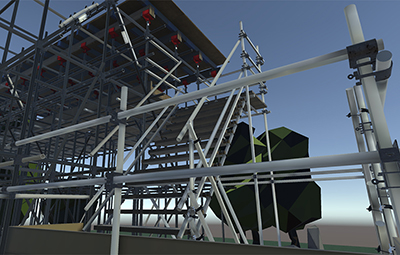
A whole host of VR applications came to our attention – and attracted yours. Like this story from Skanska.
Skanska is using “room-scale” virtual reality to train its temporary works supervisors and coordinators in a safe and flexible environment.
The training programme simulates six different temporary works set ups, including a large cofferdam excavation fortified with steel props and sheet piles, and falsework scaffolding designed to support wet concrete.
Trainees wearing HTC Vive headsets are immersed in a 1:1 scale environment and interact with virtual structures using handheld controllers, taking measurements, checking specifications and inspecting connections.
In February, BAM told BIM+ that it would use VR across its construction operation.
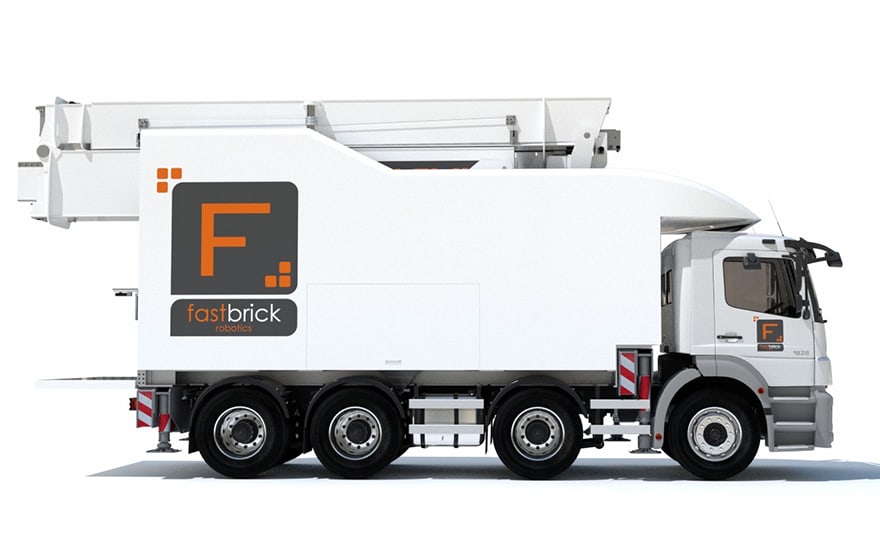
4. Is this the machine that spells the end for traditional bricklayers?
Artificial intelligence and robotics were never off the agenda at conferences up and down the land in 2017 and the year saw some remarkable new developments.
In April Australian firm Fastbrick Robotics unveiled a machine capable of laying roughly 1,000 bricks an hour, equivalent to the entire shell of a house in just two days.
Read more here.
5. Or could robots replace cranes?
Another headline grabber was the cable-stay intelligent robot that could provide the blueprint for eliminating cranes – and crane drivers – on building sites. It forms the centrepiece of an exhibition curated by Arup in central London.
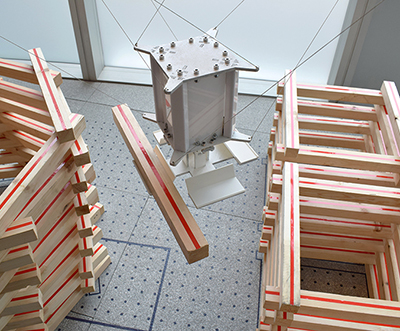
The DNA of Making, as the installation is called, has been developed by London-based architect Arthur Mamou-Mani, in conjunction with Arup’s Francis Archer and Andy Edge.
Operating from overhead cables, which it moves along in the same way as cameras, the robot uses artificial intelligence (AI) to assemble and deconstruct predesigned two-metre high towers.
The robot is able to “learn” through the assembly process and placement of each wooden block, adjusting to any differences between the physical and “virtual” location of blocks stored on a digital 3D model. It uses a feedback loop to ensure that each block is placed accurately, avoiding any misplacements that could threaten the structural integrity of the tower.
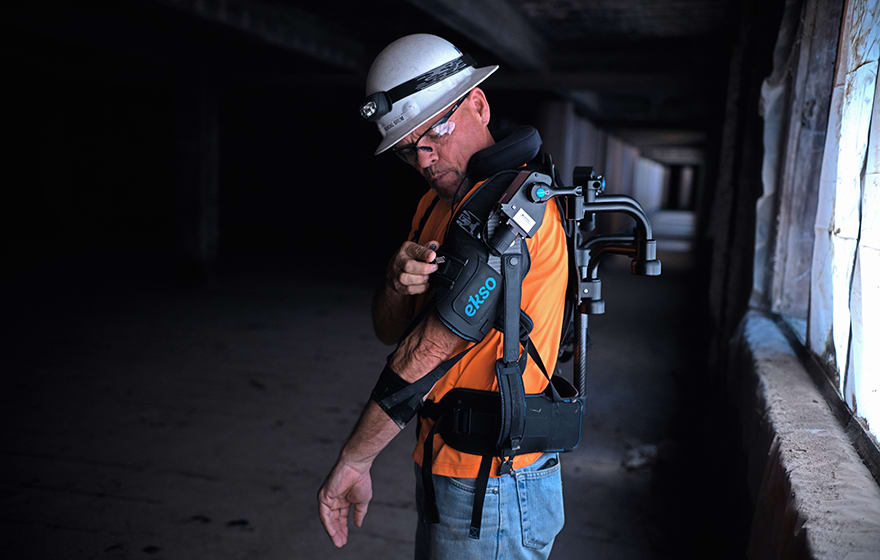
6. Exoskeletons and robotic vests
A robotic vest designed to enable construction workers to lift heavy objects with reduced exposure to injury or muscle strain will launch in the UK next spring. When we ran it in September it caught readers’ imagination for sure.
The EksoVest, developed by California-based firm Ekso Bionics, is a form of exoskeleton, worn like a backpack, that can provide 2.3kg-6.8kg of vertical lift per arm when lifting tools or materials.
The device, which weighs 4.3kg, is being trialled by construction companies in the US and Canada, ready for production in September, with a UK rollout planned for March 2018.
Another new product saw an exoskeleton double as a chair.
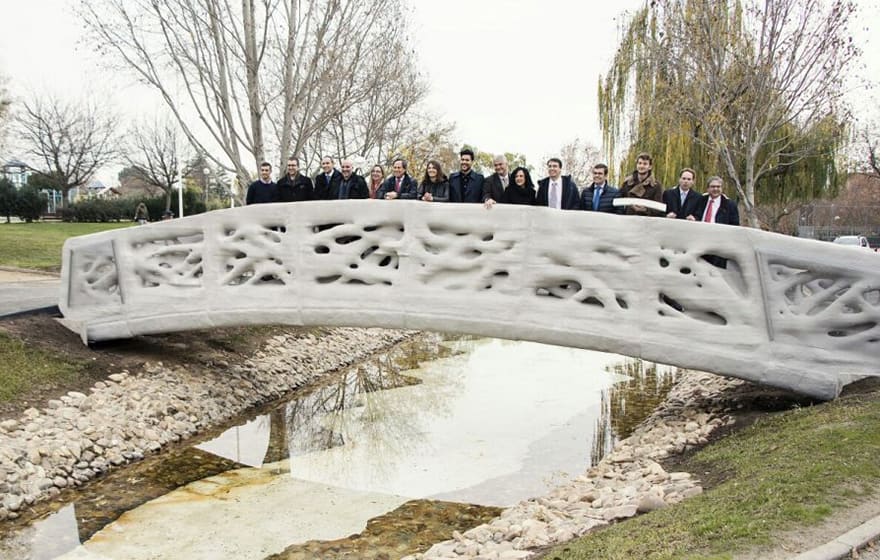
7. World’s first 3D printed bridge completed
Again, advances in the world of 3D printing certainly continued apace as we highlighted in September. We reported on a lab in Dubai that had been printed in three weeks.
One milestone during the year was when the Institute of Advanced Architecture of Catalonia (IAAC) created the world’s first 3D printed bridge, as the technology moves closer to the mainstream.
According to the institute this is the first time 3D printing technology has been applied in the field of civil engineering.
8. Should we still be using the BIM word?
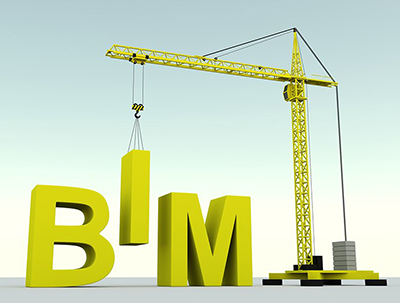
While our industry is striving towards collaborative working and better information management processes, something strange has happened – BIM has become something of an unfashionable word, wrote John Adams and Dan Rossiter.
There is a growing number of professionals within our industry waving the flag of an anti-BIM movement. This is because the once dominant and revolutionary buzzword has grown to mean so much it can mean almost nothing at times in the eyes of some.
However, not everyone is in a rush to leave this acronym behind. We would argue that BIM needs to keep its place in the construction lexicon to support our journey to the digital industry we know we must evolve into – they said, causing a twitter furore.
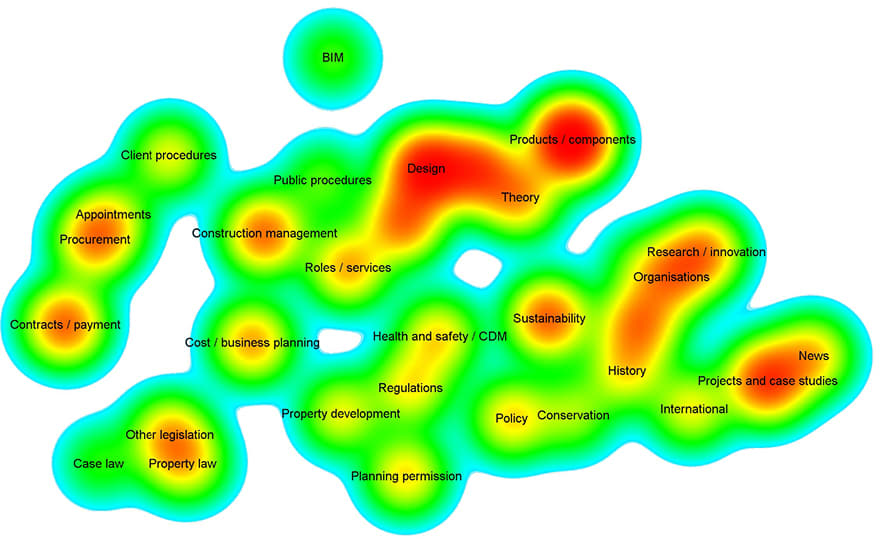
9. Is BIM too isolated?
BIM knowledge and practitioners are “isolated” from the rest of the industry, a new study revealed in September.
The team behind Designing Buildings Wiki – the knowledge resource for the built environment – analysed six million pieces of data generated from users of the site to find out knowledge needs and how it was connected across subjects. The results were unveiled at the launch in London earlier this week.
Architect Dr Gregor Harvie, co-founder of the Wiki, said: “We cross-referenced our 5,000 articles with 6 million data points, scrutinising a range of factors including: connections between subjects, the popularity for subjects, the number and duration of views, and the age, sex and location of readers.
“Our findings have generated a series of never-before seen maps of construction industry knowledge, allowing us to draw some surprising conclusions about what knowledge is available, what knowledge people want and what needs to change. This report asks a crucial question – is construction industry knowledge fit for purpose?”
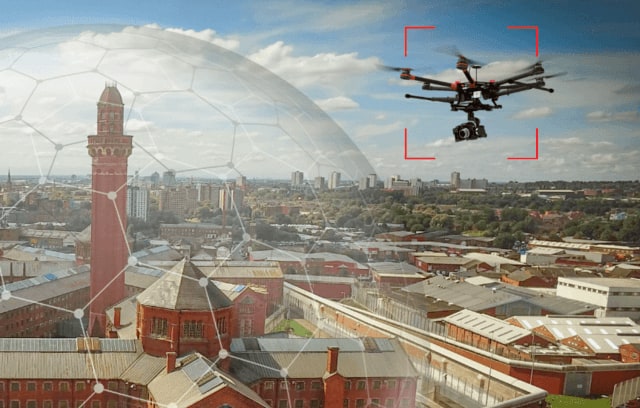
10. Drones and anti-drones
A British prison became the world’s first to use a new system designed to stop drones flying over perimeter walls to drop contraband – and our most read story in May.
The device creates a 2,000 ft (600m) shield around and above a prison that will detect and deflect the remote-controlled devices, The Daily Telegraph reported. Drones have become a major security problem in Britain’s prisons and are increasingly used to smuggle in drugs, weapons, phones and other valuables.
The system uses a series of disruptors to jam the drone’s computer and block its frequency and control protocols.
When the drone is blocked it is returned to where it came from. The new system, called Sky Fence, is being introduced at Les Nicolles prison on Guernsey.
But drones are being put to positive use in construction – more and more. A survey in the autumn revealed that the sector is adopting drones faster than any other industry.
Using them to monitor health and safety is also a growing application.











